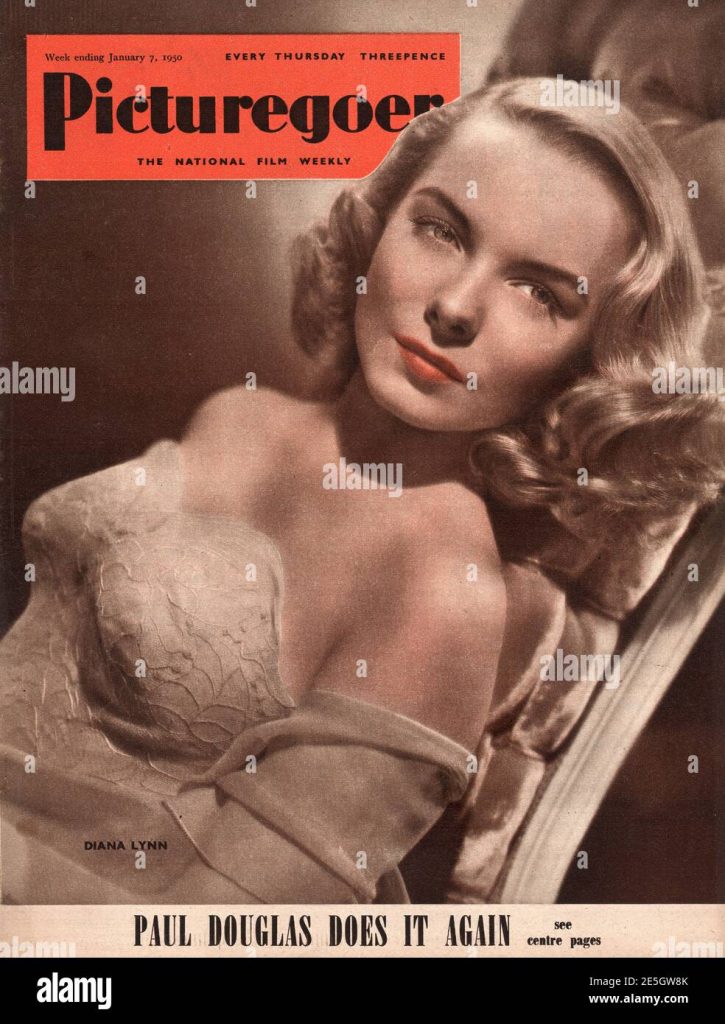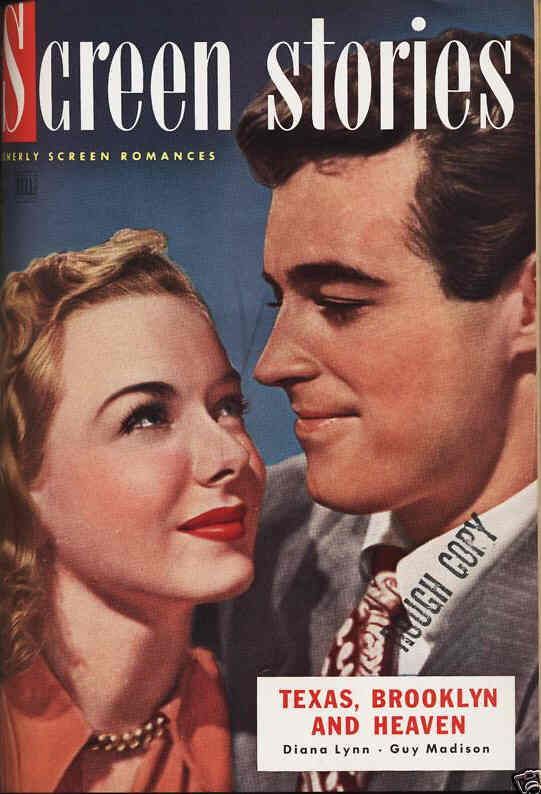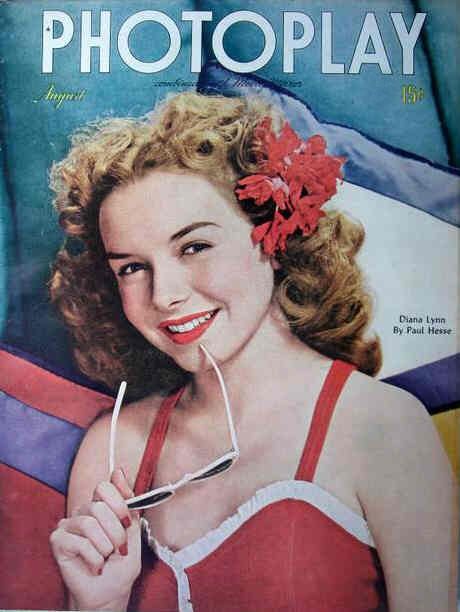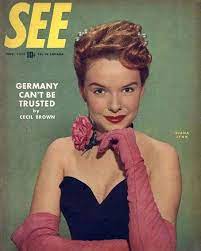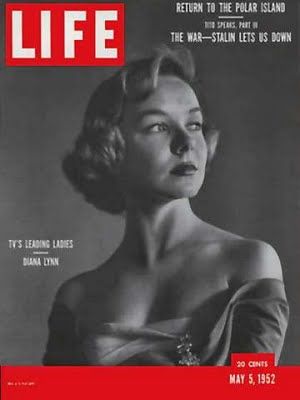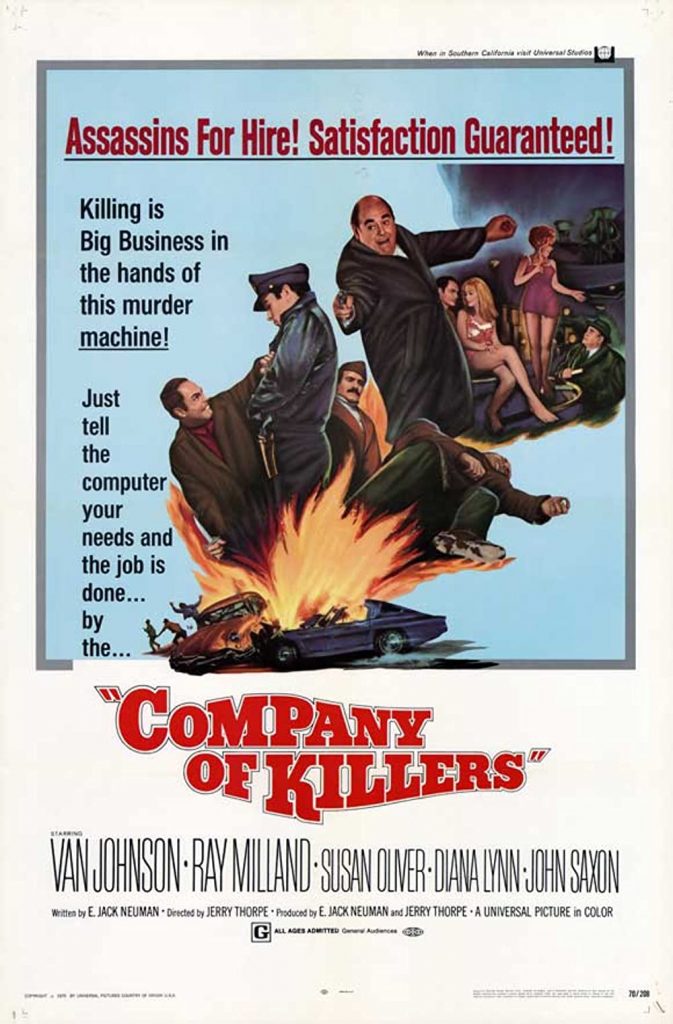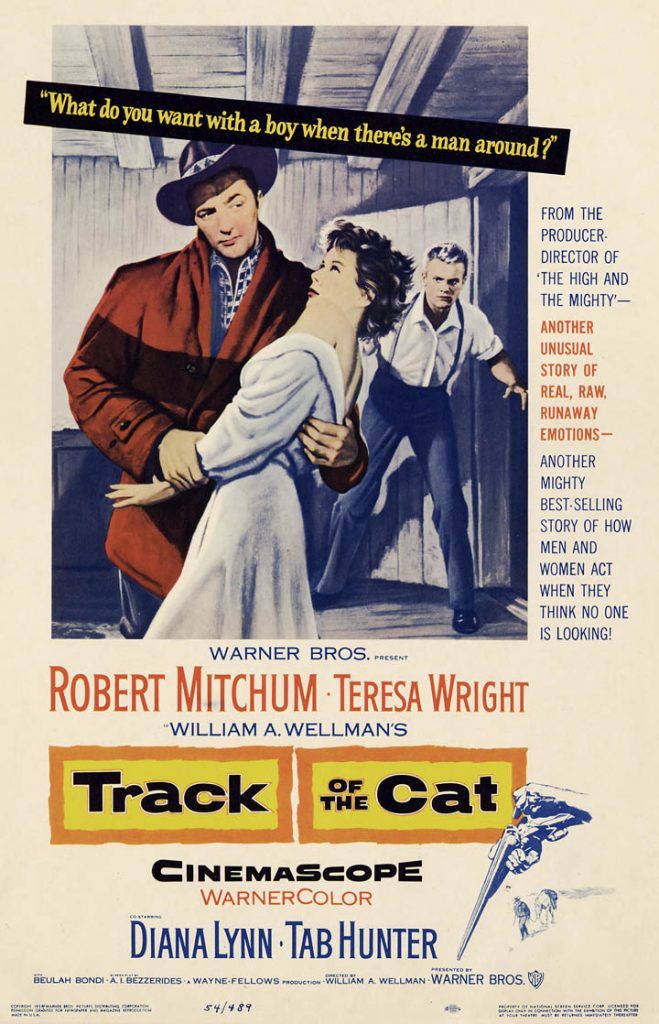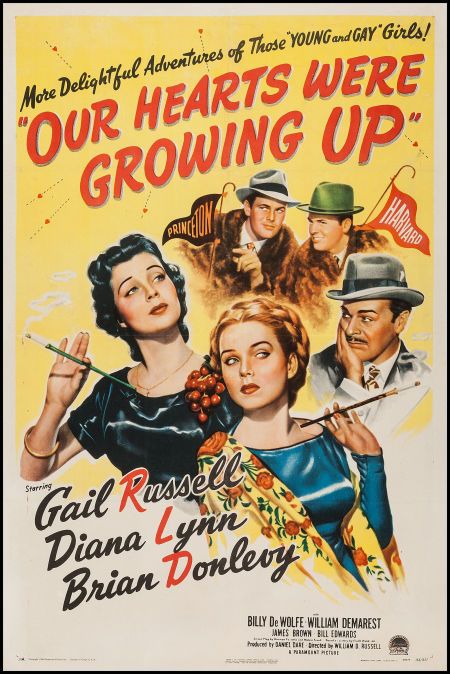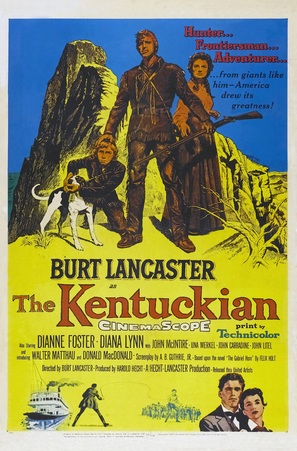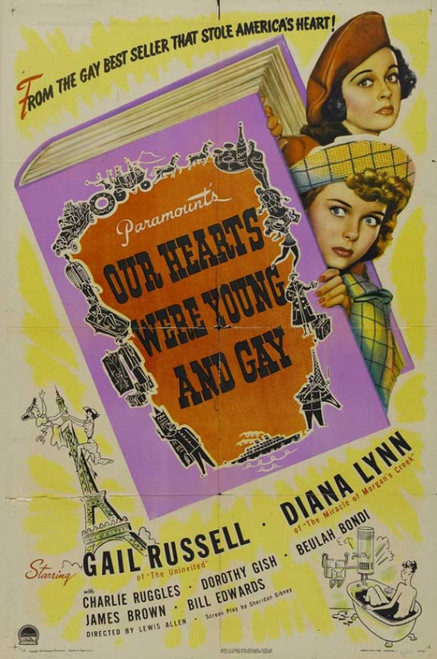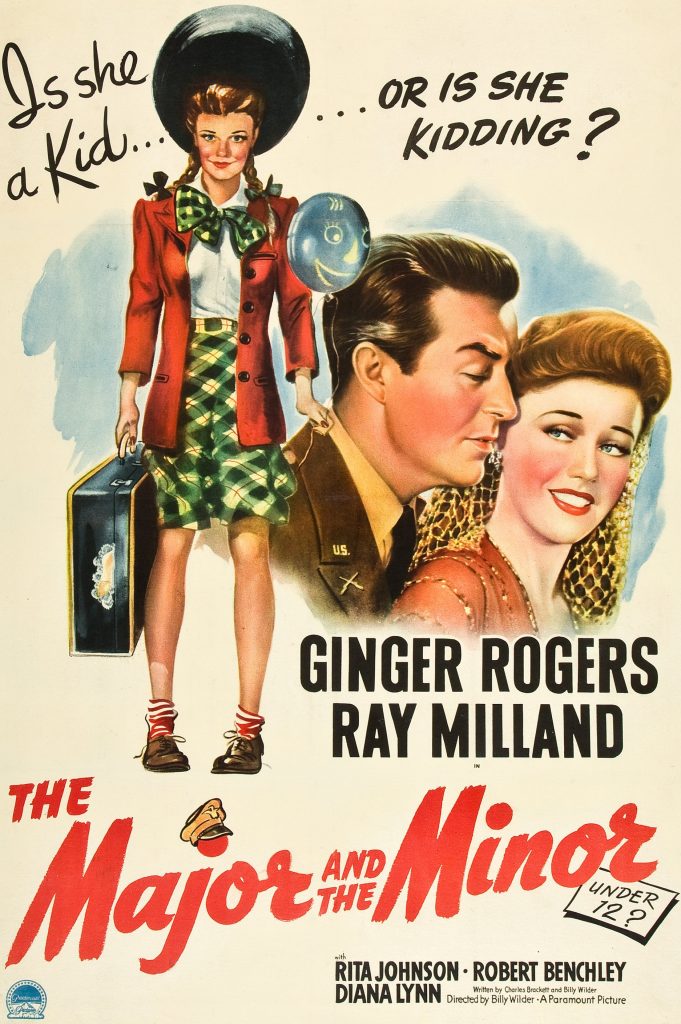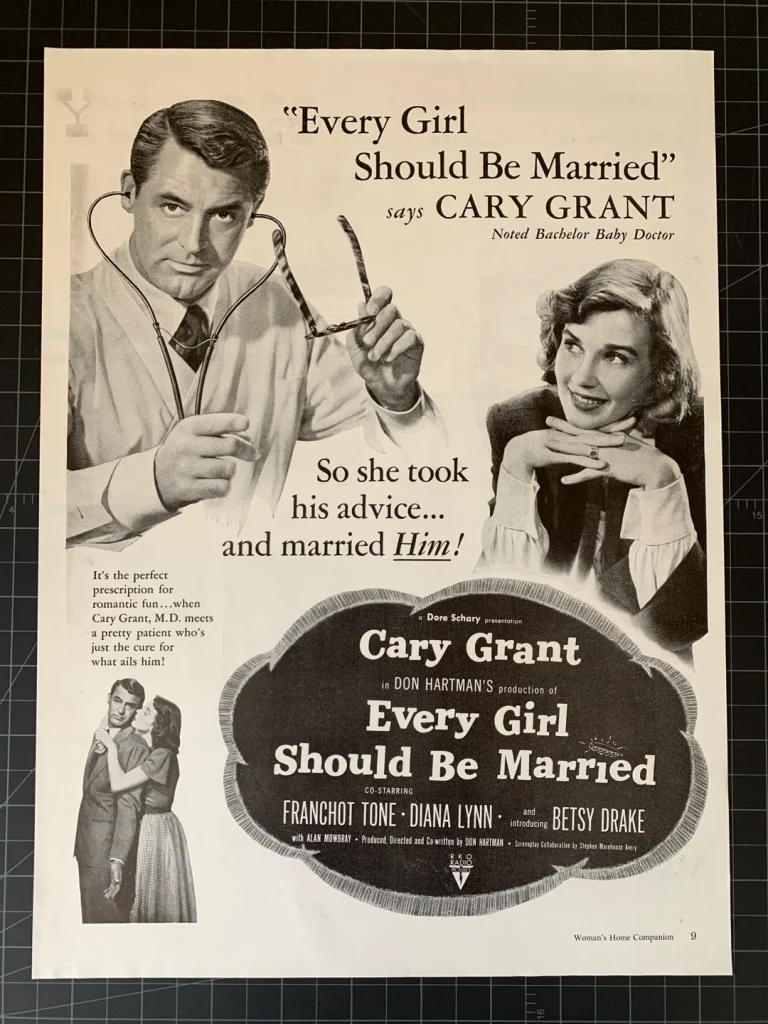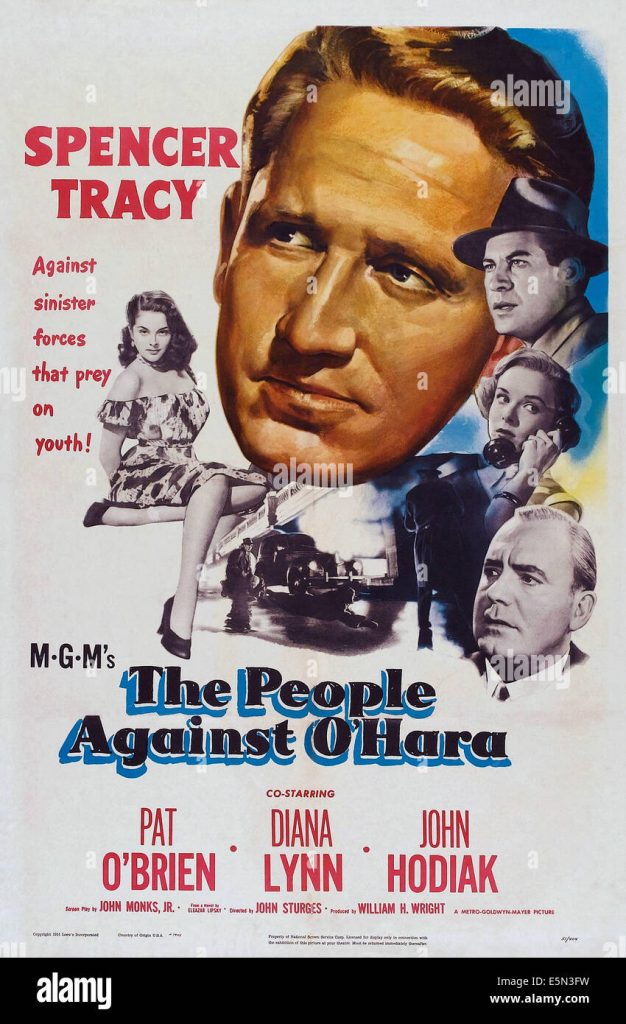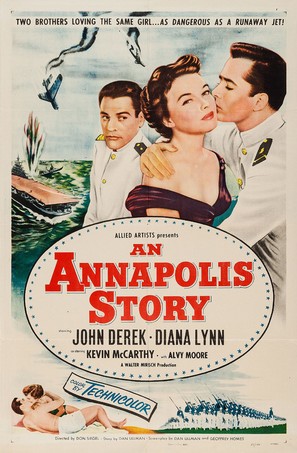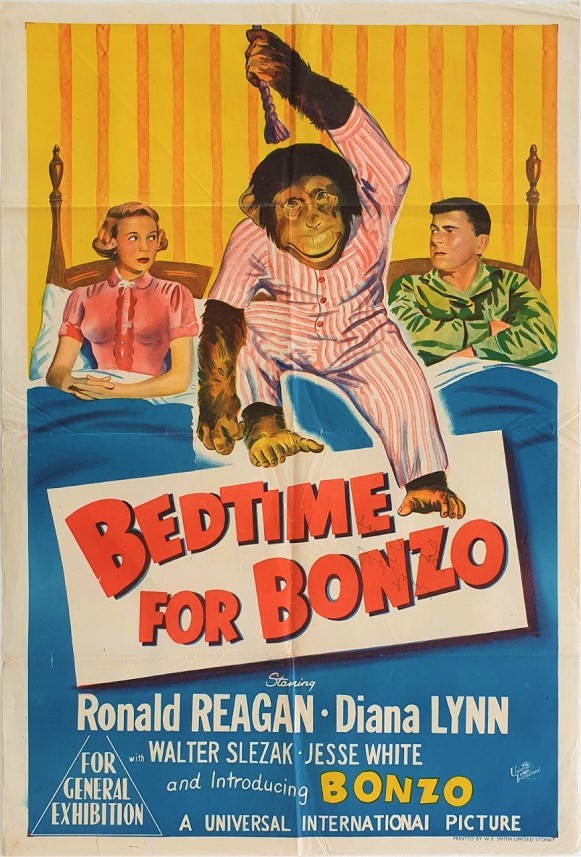
Diana Lynn was born in 1926 in Los Angeles. Her film debut was in “They Shall Have Music”. She played Ginger Roger’s younger sister in “The Major and the Minor”. In 1944 she starred in “The Miracle of Morgan’s Creek” directed by Preston Sturges. She was in Dean Marin and Jerry Lewis’s first film “My Friend Irma” in 1949. Her last film was “Company of Killers” in 1970. Diana Lynn died in 1971 at the age of 45.
TCM Profile:
A more-than-capable actress with chipper good looks and a pleasantly piquant personality, Diana Lynn began in films as a precocious adolescent and settled into a career as a dependable leading lady before stretching her acting muscles on the stage and, especially, in television.
Born Dolores Loehr in Los Angeles in 1926, Lynn was a musical prodigy who was playing piano professionally by the time she was 10. She made her movie debut at age 13 in Samuel Goldwyn’s They Shall Have Music(1939), unbilled as one of a group of classical music students. After a similar appearance at Paramount in There’s Magic in Music (1941), she signed a long-term contract at that studio and was groomed to become a featured player.
Lynn’s first film under her new contract, The Major and the Minor (1942), marked Billy Wilder’s U.S. directorial debut and Lynn’s emergence as a bright young spirit in films. In this comedy about a grown woman (Ginger Rogers) who poses as an 11-year-old girl, Lynn is the wisecracking youngster who sees through the ruse. She gained even more attention as Betty Hutton’s irrepressible kid sister in Preston Sturges’ The Miracle of Morgan’s Creek (1944). Lynn played Emily Kimbrough to Gail Russell’s Cornelia Otis Skinner in the film version of the writers’ joint memoir Our Hearts Were Young and Gay (1944), a surprise hit that spawned a sequel, Our Hearts Were Growing Up (1946).
The more mature Lynn starred in another successful pair of comedies, My Friend Irma (1949) and My Friend Irma Goes West (1950), playing straight woman in a cheerful style that allowed Marie Wilson (as Irma) and the new comedy team of Dean Martin and Jerry Lewis to shine. In Every Girl Should Be Married (1949), Lynn plays third fiddle to Cary Grant and his wife-to-be, Betsy Drake, in the story of a young woman obsessed with landing a handsome pediatrician as her husband. Cast as the heroine’s sidekick and sparkling when she has the opportunity, Lynn might just as easily have taken on the lead. She performed yeoman service as Ronald Reagan’s intended bride in Bedtime for Bonzo, the future president’s most notorious vehicle; and as Spencer Tracy’s protective daughter in The People Against O’Hara (both 1951).
In the mid-1950s, Lynn starred in two films produced by John Wayne. In Plunder of the Sun (1953), she had a change of pace as a hard-drinking temptress with designs on Glenn Ford, who plays an insurance investigator smuggling a mysterious package from Cuba to Mexico. In William Wellman’s stylized Western Track of the Cat (1954), photographed in color on black-and-white locations with dashes of color, Lynn wears a yellow blouse to signify her character’s positive nature. (Villain Robert Mitchum wears a red coat.)
Lynn’s final feature film was Company of Killers (1970), a crime drama originally produced for television. She had turned to that medium in the 1950s and became one of its busiest and most accomplished performers in such series as Playhouse 90 and The U.S. Steel Hour. She shone in Katharine Hepburn’s old role in a 1959 TV version of The Philadelphia Story and also had some success on Broadway, especially as a replacement for Barbara Bel Geddes in the hit comedy Mary, Mary in the early 1960s.
Lynn had settled in New York City, where she ran a travel agency after retiring from films. Her old studio, Paramount, offered her a choice role in Play It As It Lays (1972), and she returned to Los Angeles in preparation for a comeback in films. But she suffered a fatal stroke before production began, prematurely passing away at age 45 in 1971.
by Roger Fristoe
The above TCM profile can also be accessed online here.
